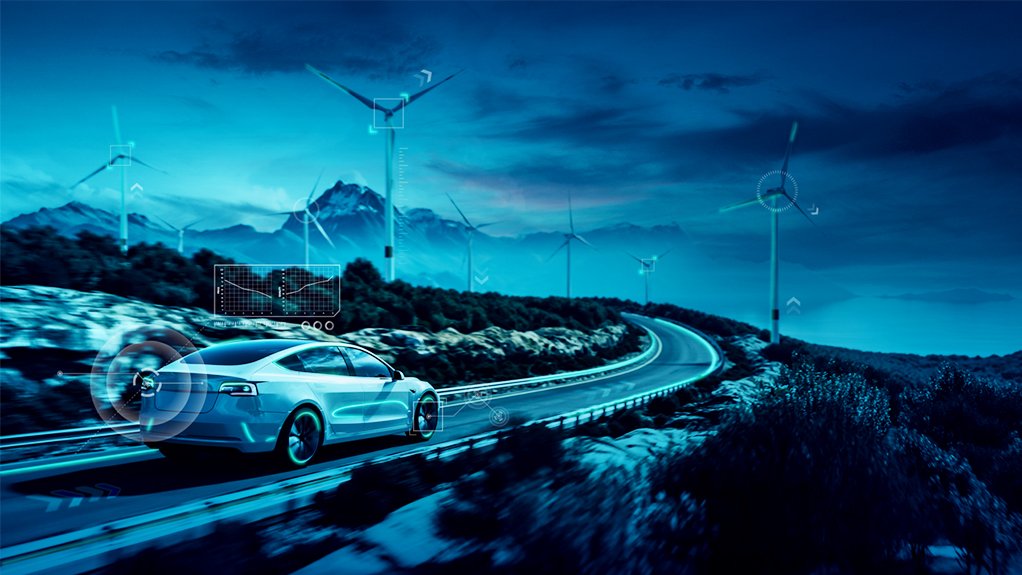In the tight race to market, EVs are becoming less green – research report
Independent research into electric vehicle (EV) development has found that most automotive companies are more focused on improving range and reducing costs, than improving the carbon footprint of these vehicles.
This new research has been published by the Manufacturing Intelligence division of global technology company Hexagon.
While EVs eliminate tailpipe emissions, they also produce a ‘long tail-pipe’ of increased demand for fossil-fuel generated electricity, as well as reliance on energy-intensive materials and processes to construct these vehicles and their batteries, says Hexagon.
A recent report by Volvo backs that up, notes the company.
The Volvo report shows that when charging its C40 Recharge model with electricity generated from clean sources, the vehicle’s lifecycle carbon dioxide (CO2) footprint comes down to about 27 t of CO2, compared with 59 t for an XC40 compact sports-utility vehicle powered by a combustion engine.
However, when drivers charge their C40 Recharge using the average global energy mix (with around 60% generated from fossil fuels), the car’s life cycle CO2 tonnage can increase to as much as 50 t, significantly reducing the environmental gains compared with a traditionally powered car.
Clean energy is also an important factor in reducing the carbon footprint involved in producing an electric car.
The Volvo report reveals that production emissions of a C40 Recharge are 70% higher than for a petrol-powered XC40.
This is mainly owing to the carbon intensity of battery and steel production, as well as from the increased share of aluminium in the car.
Hexagon’s research shows that only 38% of car makers are currently increasing their investment in the more sustainable design of EVs, which appears to be a much lower priority than the attributes that will appeal to consumers in the showroom.
In contrast to this, 84% of car makers are increasing investment in improving EV range; 60% are increasing investment in design that will enable lower production and retail costs; and 58% are increasing investment in improving EV performance.
The Hexagon research also found that companies are hitting a number of roadblocks in achieving the vehicles’ full green promise.
When asked about their challenges in achieving greener EVs, the majority of carmakers (56%) identify a lack of alternatives to rare-earth metals for batteries as the major obstacle. Half (49%) are also concerned about the lack of recyclable battery materials, closely followed by the lack of recycling programmes and infrastructure (47%).
“Our research reflects a welcome recognition by the auto industry that sustainability involves more than merely reducing road emissions, revealing an understanding of the whole-lifecycle manufacturing and material impact of vehicles,” says Hexagon Manufacturing Intelligence division global e-mobility industry VP Ignazio Dentici.
“However, it also shows that despite this knowledge, car makers are feeling more pressure to compete for consumer sales than to ensure EVs are able to fulfil their core purpose of reducing the environmental impact of road transport.
“The industry is having to move at unprecedented speed to innovate in pursuit of improvements in range, production costs and sustainability, within an increasingly competitive environment, and while facing significant supply chain challenges,” notes Dentici.
“Only by designing for a circular economy – from factory, to consumer and beyond – can we reduce demand for energy and materials in the coming years.”
Comments
Announcements
What's On
Subscribe to improve your user experience...
Option 1 (equivalent of R125 a month):
Receive a weekly copy of Creamer Media's Engineering News & Mining Weekly magazine
(print copy for those in South Africa and e-magazine for those outside of South Africa)
Receive daily email newsletters
Access to full search results
Access archive of magazine back copies
Access to Projects in Progress
Access to ONE Research Report of your choice in PDF format
Option 2 (equivalent of R375 a month):
All benefits from Option 1
PLUS
Access to Creamer Media's Research Channel Africa for ALL Research Reports, in PDF format, on various industrial and mining sectors
including Electricity; Water; Energy Transition; Hydrogen; Roads, Rail and Ports; Coal; Gold; Platinum; Battery Metals; etc.
Already a subscriber?
Forgotten your password?
Receive weekly copy of Creamer Media's Engineering News & Mining Weekly magazine (print copy for those in South Africa and e-magazine for those outside of South Africa)
➕
Recieve daily email newsletters
➕
Access to full search results
➕
Access archive of magazine back copies
➕
Access to Projects in Progress
➕
Access to ONE Research Report of your choice in PDF format
RESEARCH CHANNEL AFRICA
R4500 (equivalent of R375 a month)
SUBSCRIBEAll benefits from Option 1
➕
Access to Creamer Media's Research Channel Africa for ALL Research Reports on various industrial and mining sectors, in PDF format, including on:
Electricity
➕
Water
➕
Energy Transition
➕
Hydrogen
➕
Roads, Rail and Ports
➕
Coal
➕
Gold
➕
Platinum
➕
Battery Metals
➕
etc.
Receive all benefits from Option 1 or Option 2 delivered to numerous people at your company
➕
Multiple User names and Passwords for simultaneous log-ins
➕
Intranet integration access to all in your organisation




















